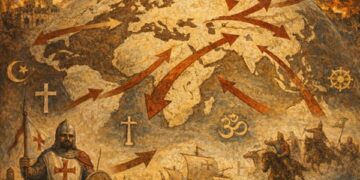By: Hilal Ahmad Tantray
Caste in Kashmiri language is known as ‘Kram’ and there is a long list of krams in Kashmir. In ancient times, Kashmir’s population consisted primarily of Hindus, with smaller communities of Buddhists and Jains. The society was divided into four main castes: Brahmins, Kshatriyas Vaishyas and Shudras. These divisions were not always rigid, and there were often overlaps and sub-groups within each caste based on occupation and social status.
With the spread of Islam into the Kashmir Valley, significant social changes occurred. Many Kashmiri Hindus converted to Islam, while some Brahmins (Pandits) maintained their Hindu faith. This religious shift influenced the caste dynamics in the region.
Kashmiri castes were broadly categorized into two types: Caste by Origin: based on birth and lineage, similar to the Varna system in other parts of India. Caste by Occupation: based on the type of work individuals performed, irrespective of their birth or lineage. The Tantray caste falls under the latter category, categorized by their occupation and specific skills.
The Tantray caste is traditionally associated with professions related to religious hymns (Tantras) and spiritual practices. They are known for their knowledge of Tantric rituals, which involve sacred texts, rituals, and sometimes magical practices.
According to Tareekh-e-Aqwam –e-Kashmir, Tantray was the class of people who knew Tantar or religious hymns. As per Kashmiri Pandits, the word ‘Tantre’ derives from ‘Tantrik,’ where ‘Tantric’ refers to someone knowledgeable. The terms Tantra, Mantra, and Jantar are widely known; Jantar refers to amulets and spells associated with any action. Kashmiri Pandits regard Tantras as akin to Brahmins in this context.
According to some historical sources, Tantrays were originally considered Brahmins (priests and scholars) before their conversion to Islam. Others argue they were of Kshatriya (warrior) origin. This doubt in origin reflects the complex historical transitions and intermingling of cultural and religious influences in Kashmir.
Tantrays have a significant historical reputation as warriors. References in historical texts such as Rajtarangini highlight their involvement in military roles during the regime of Raja Gopal Yerman (904 A.D. – 906 A.D.) and of Sassala (1112 A.D. – 1120 A.D). In the 1891 census of Jammu and Kashmir, the Tantray community was listed among the upper Brahmins, indicating a certain level of social prestige and recognition.
Historians like Walter Lawrence note the recruitment of Tantray warriors into formidable armies during various periods of Kashmir history. This highlights their martial traditions and their role in defending and governing the region. Beyond military roles, Tantrays have also contributed to Kashmiri culture through their knowledge of religious practices and their participation in broader social and cultural activities. Tarikh Hasan also mentions the Tantray tribe among the eight prominent tribes of Kashmir, noting their historical role as warriors
Tantray are considered of prestigious traditional krams, as per the sources tantray are that caste that comes under the category of Ashraf (High status). The Tantray caste in Kashmir represents a unique blend of occupational specialization, historical evolution, and significant contributions to the region’s social, cultural, and military history. Their journey from an occupation based caste in Hindu society to their role in Muslim majority Kashmir underscores the dynamic nature of caste identity and adaptation in the region’s complex historical context.
The writer is Research Scholar, Jamia Millia Islamai, New Delhi.




